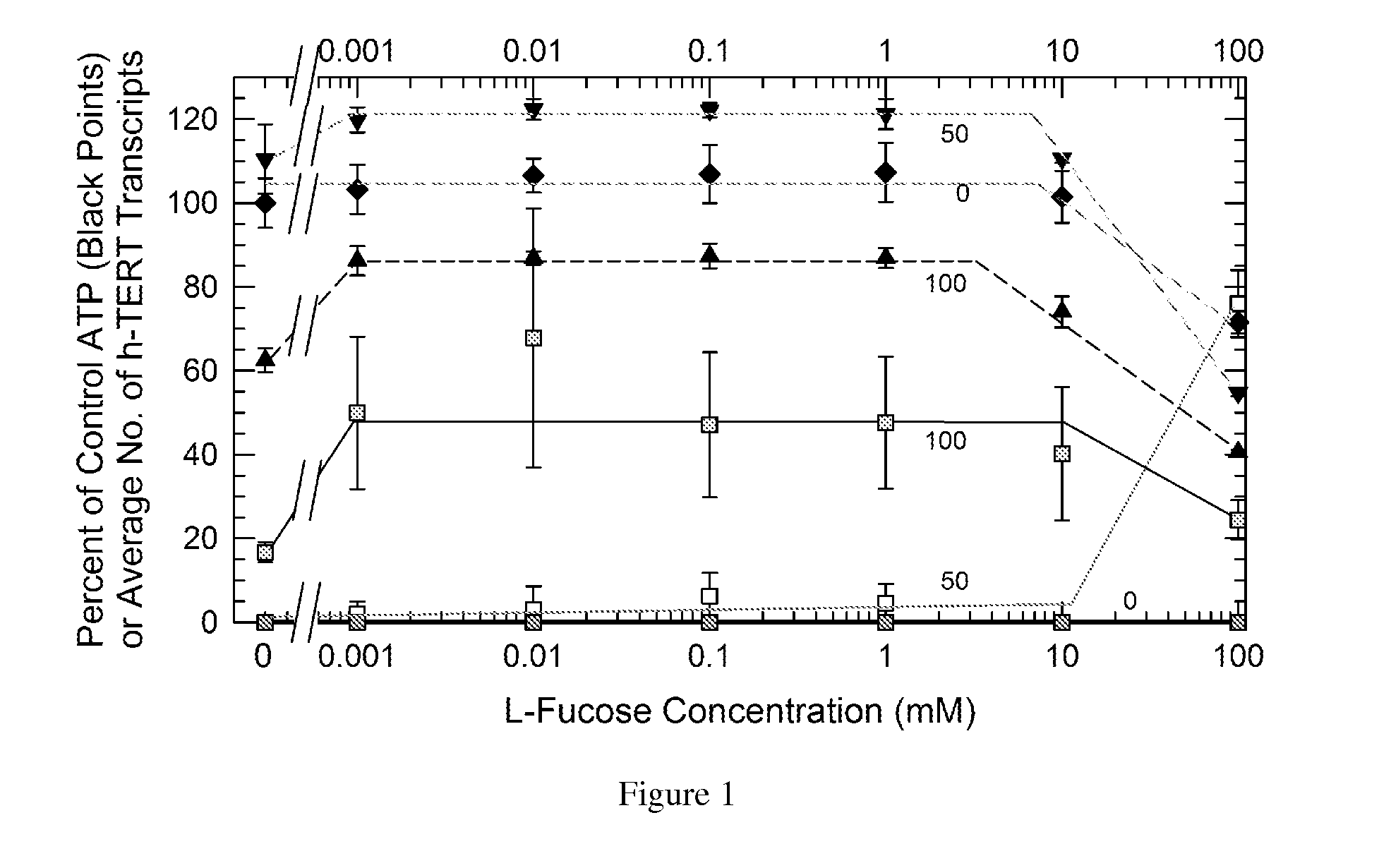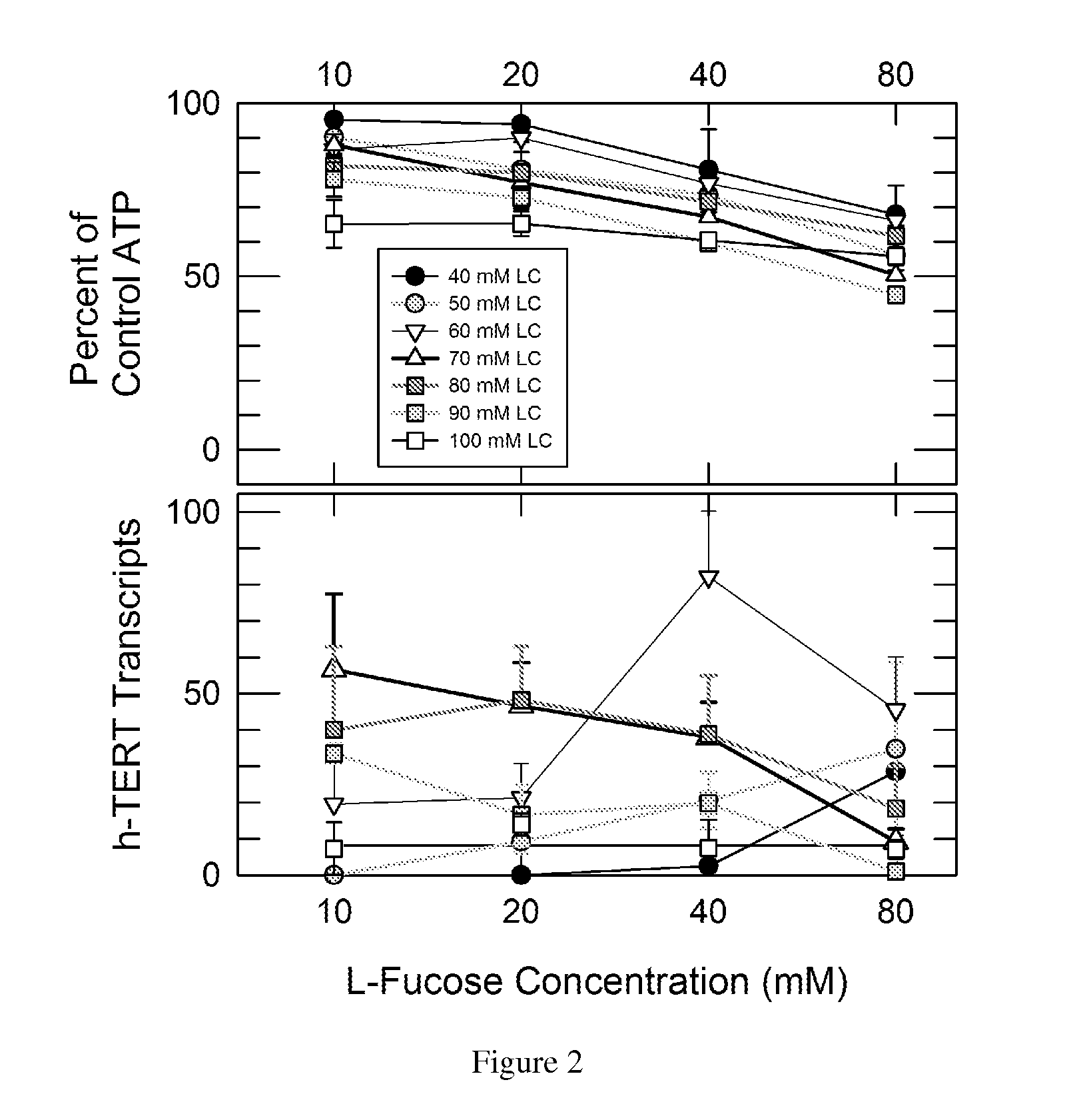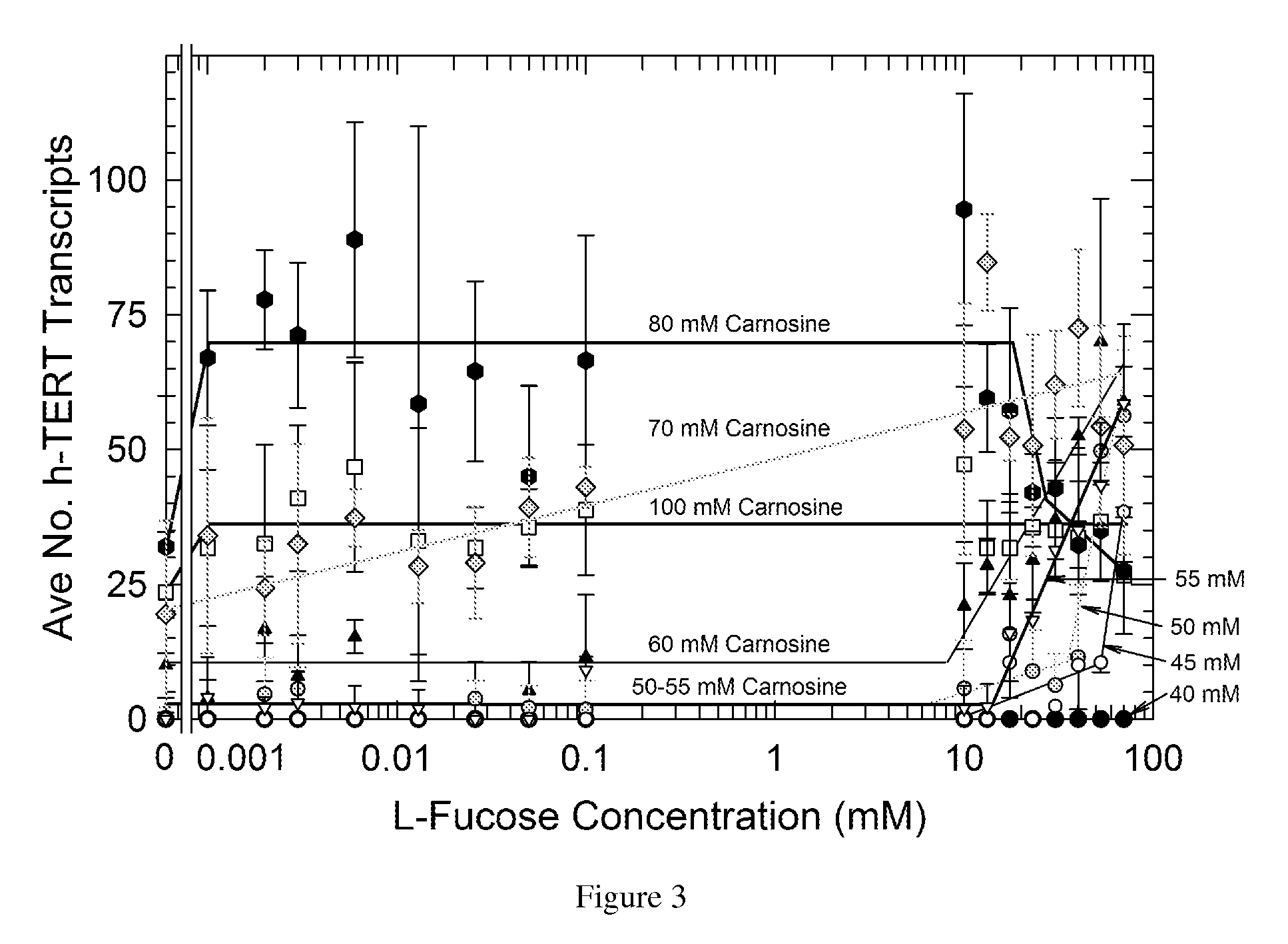Nutritional activation of telomerase in vitro and in vivo with increased safety
- Summary
- Abstract
- Description
- Claims
- Application Information
AI Technical Summary
Benefits of technology
Problems solved by technology
Method used
Image
Examples
example 1
Application of LC and LC+LF to Skin
[0038]Telomere shortening is expected to have many effects in the body, but perhaps the most visible effects are expected to be in the skin Telomere shortening results in a change in phenotype on the part of dermal fibroblasts, which stop producing the collagen that is required to maintain skin suppleness and instead begin to produce collagenase and elastase, which are enzymes that degrade collagen and another major structural protein in skin, elastin. Telomere shortening also causes fibroblasts to become enlarged and to change their shapes. It is easy to envision how these changes could contribute to visible signs of facial aging.
[0039]For these reasons, and because skin is a uniquely accessible part of the body, one of us (GMF) experimented with a variety of skin creams containing LC or LC plus LF to determine whether signs of dermal aging could be reduced by direct application of the cream to skin. It was found that a skin cream comprising 100 m...
example 2
[0043]Muscles contain high concentrations of LC. One of us (GMF) has ingested oral LC in amounts ranging from 2-8 grams / day and has noticed no side effects and no diminution in muscle strength out to the age of nearly 62 and, in conjunction with a weight training program, is believed to be as strong as or stronger than he has ever been. We speculate the orally administered LC is absorbed and taken up by cells, thereby protecting them from aging, and that LC plus LF may act in a similar way, enhancing the effects of LC.
[0044]Thus, although it is difficult to bathe cells in high concentrations of LC and LF in vivo, some key cells may concentrate at least LC and allow telomere protection in this way. Cell membrane LF transporters are also known to exist.
[0045]In the best mode, the most effective oral dosage regimen is believed to be 1-9 grams 1 to three times per day, or, more preferably, 2-7 grams 1 to three times per day, with or without the inclusion of LF.
example 3
Gastrointestinal Tract and Kidneys
[0046]It is possible to bathe the cells of the GI tract and, as noted, the skin, in high enough concentrations to achieve a potential telomere-protecting effect. The contents of the human stomach have a volume on the order of 400 ml. LC has a mass of 226 g / mole, which means ˜4.5 grams contain 20 millimoles. Dissolved in 400 ml, the concentration would be ˜50 mM, which is high enough to induce telomerase when and only when LF is present according to our experience with fibroblasts described below. A dose of 6 grams is equivalent to about 66 mM in the stomach and upper intestine, which the present invention discloses to be effective and ideal for TERT and h-TERT induction with and without LF. A dose of 9 grams is equivalent to about 99 mM in the stomach and upper intestine, which is at the upper limit of the preferred concentration range for LC. Thus LC and particularly LC plus LF may protect the lining of the gastrointestinal tract against the risk o...
PUM
| Property | Measurement | Unit |
|---|---|---|
| Mass | aaaaa | aaaaa |
| Mass | aaaaa | aaaaa |
| Molar density | aaaaa | aaaaa |
Abstract
Description
Claims
Application Information
 Login to View More
Login to View More - R&D
- Intellectual Property
- Life Sciences
- Materials
- Tech Scout
- Unparalleled Data Quality
- Higher Quality Content
- 60% Fewer Hallucinations
Browse by: Latest US Patents, China's latest patents, Technical Efficacy Thesaurus, Application Domain, Technology Topic, Popular Technical Reports.
© 2025 PatSnap. All rights reserved.Legal|Privacy policy|Modern Slavery Act Transparency Statement|Sitemap|About US| Contact US: help@patsnap.com



